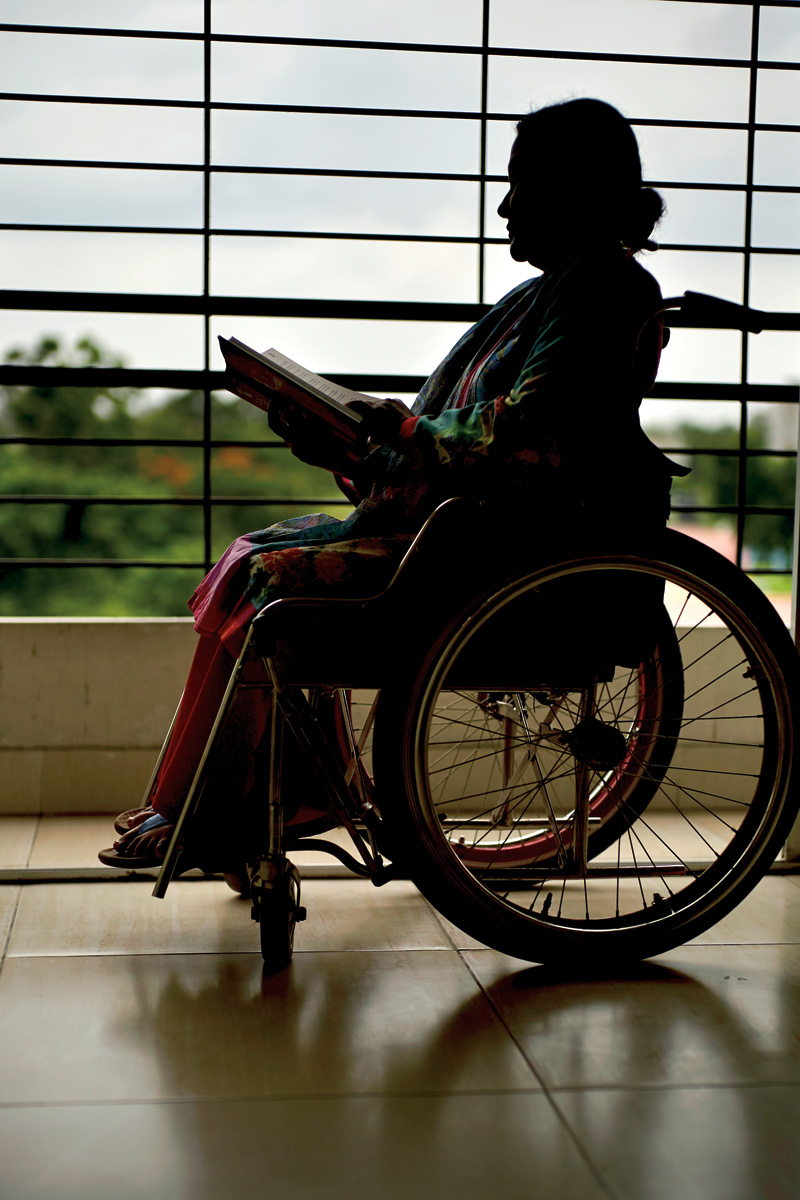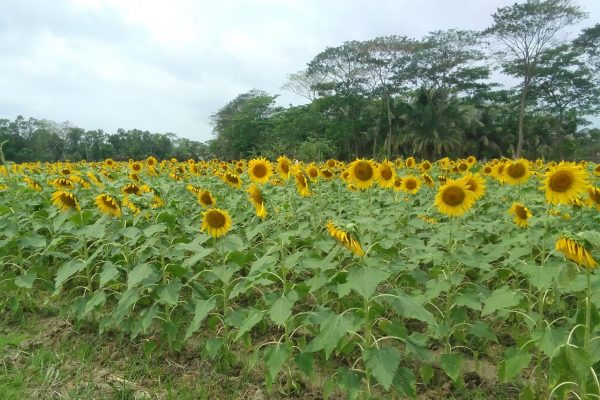Reading Time: 4 minutes
One of the most glaring findings from a recent BRAC study shows how completely dependent the respondents are on external support, be it food or cash assistance.
Yasmin works at a tailoring shop, cutting and sewing colourful fabrics into clothes for her customers. She is visually impaired and being the eldest, is the only earning member among her siblings.
This time would normally have been the busiest period of the year for her, with Eid, the biggest annual celebration for Muslims, less than a month away. Instead, it is eerily quiet. Yasmin has no income and no savings.
Yasmin knows about COVID-19 from what their father hears in the local market, which he goes to as little as possible now. It is a virus which has forced her mother to sell her jewellery, the reason no one has any work and the cause behind her family now eating only one meal a day.
Do Yasmin and her family know which hospital to go to if someone falls sick? Yasmin shrugs – the only ‘good’ hospital is far away. Has their family received any support from their local government? Not yet. Unable to wait and facing starvation, Yasmin’s father is borrowing money from a relative.
Yasmin is one of the 65 participants with disabilities who were interviewed by BRAC’s skills development programme to assess how COVID-19 is impacting them. While findings are not representative of the entire population, the situation analysis sheds urgent light on the immediate assistance needed.
It is well-documented that people with disabilities are among the most vulnerable during crises.
People with disabilities are more likely to have less money, more informal jobs and to be more socially isolated. Evidence shows that health inequities worsen during a disaster. Like Yasmin, all of this means they have fewer resources (financial and social) and therefore struggle to cope during and after a crisis.
One of the most glaring findings from BRAC’s survey is how completely dependent the respondents are on external support, be it food or cash assistance. Almost all of them are out of work and have not received any kind of support. The finding reiterates an old problem; people with disabilities are not targeted clearly for emergency support.
Why are people like Yasmin not targeted? One of the factors which makes getting relief to people with disabilities challenging is the lack of information about them. Even the most basic figure – the number of people living with disabilities in Bangladesh – remains inconclusive. The Bangladesh Household Income and Expenditure Survey 2010 estimates that nearly 10% of the population live with a disability, which is an estimated 16 million people.
A crisis within a crisis: Access to information for people with disabilities
People with disabilities have specific communication needs. Yasmin had poor awareness on the outbreak, safety precautions and availability of services, making her extra vulnerable. She was not alone – most respondents reported having limited information.
To tackle this, there are many steps we can take for this target group. We can take information to the doorsteps of people with disabilities, send pre-recorded voice messages and communicate through telephone. We can ensure that all messages of awareness on TV are complete with sign language interpreters.
What we have to be aware of is that disabilities take many different forms, and, even within the same disability, there are different needs. BRAC staff rely on phone calls and door-to-door visits as our primary method of communication with people with disabilities. During COVID-19, as part of our extensive campaign to raise awareness, we produced a short educational video on COVID-19 using sign language. We quickly realised this had limitations, however, as people from different regions, much like languages have dialects, understand signs differently and are not all familiar with the standardised Bangla sign language.

Even if you do know where to go, there is nowhere to go
The majority of respondents reported that they were outside the purview of healthcare support services. Even if they knew where to go, like Yasmin, most respondents would find it difficult to access healthcare. There are difficulties in getting to hospitals, and difficulties with the lack of accessibility within hospitals.
Many people in this target group did not have access to protective equipment or clearly know how to prevent the virus from spreading. More than half of the respondents, especially those living in rural areas, did not have access to masks.
Perhaps more worrying, however, is that this is not a priority; food and cash assistance are of more urgent need as people are hungry and scared of accumulating debt which they will not be able to repay.
What does inclusion mean in COVID-19?
People with disabilities must be treated as a specific target group, and we need to understand what they need and ensure that they have access to information, facilities, goods and services, without discrimination and at an affordable price.
It should be noted that the respondents in the survey are skilled and have mild to moderate disabilities. This means that those without skills and/or with more severe forms of disabilities are likely facing much tougher circumstances.
Amidst an extremely fluid situation, BRAC is focusing on remaining adaptive and agile, and keeping pace with changing needs, particularly the needs of the people in the most vulnerable situations. Rapid assessments like these keep our staff in touch with the evolving realities on the ground, and, partnered with our work every day in the field, enable us to continue to design effective programmes.
We are talking about the futures of at least an approximate 16 million people, or half the population of Malaysia. As we tackle COVID-19 together, we must ensure that we are including people with disabilities. The virus does not discriminate, so, if we are to tackle it effectively, neither can we.
Read the situation report for more findings.
The situation analysis on people with disabilities was developed by Mahzuz Ali and Shifur Rahman Shakil from BRAC Skills Development Programme.
Sameeha Suraiya is lead content strategist, Sarah-Jane Saltmarsh is head, programme and enterprise communications at BRAC.
Photo credit: Barriers to healthcare faced by people with disabilities study.





